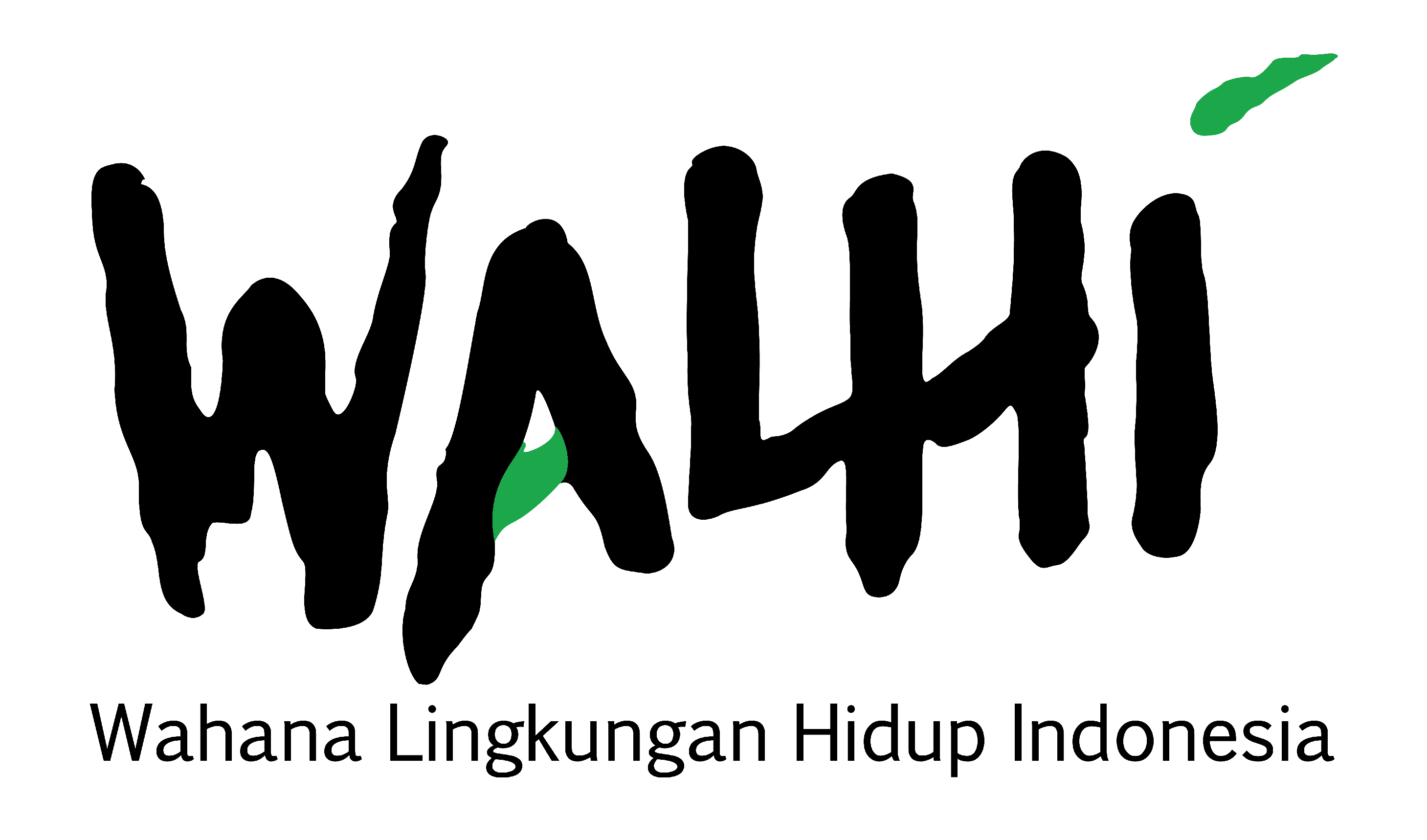Press Release
Belem, November 10th, 2025. The Indonesian government officially opened the Indonesian pavilion. However, this opening resembled the opening of a trade market for Indonesia's forests and their natural resources. The government's main proposals were the potential for 90 billion tons of carbon credits, the potential for decarbonization, and the SNDC, which it claimed could achieve Indonesia's climate commitments. The carbon trading and decarbonization that the Indonesian government promoted as climate solutions are misguided solutions that have been protested by various civil society groups, including Friends of the Earth Indonesia (WALHI).
Carbon trading is simply a way to secure the regime of extractive industries and the financialization of nature, which are, in fact, the primary causes of the climate crisis and human rights violations. The core principle of carbon trading is "offsets." Corporations or Annex I countries are still allowed to release emissions from extraction and industrial activities, even exceeding the emissions cap, as long as they offset their emissions by purchasing carbon on the carbon market.
"Carbon trading and offsets are seen as a quick and cheap solution by companies and governments. Many carbon offset projects are running with dubious claims, even falsely replacing them with a narrative that merely balances carbon (net zero or carbon neutral) in the atmosphere. This is a dangerous lie for the future of planet Earth," said Uli Arta Siagian, WALHI National Forest and Big Plantation Campaign Manager.
Carbon concessions in many places have evicted indigenous peoples and local communities from their livelihood. For example, the carbon project in Jambi has evicted the Anak Dalam tribe. The carbon project in West Kalimantan, which will take place in Melawi Regency, West Kalimantan, will displace indigenous people and potentially criminalize them. This is because 13,000 hectares of forest belonging to indigenous people will be the project site. In the company's presentation materials, the community is prohibited from carrying out traditional rituals, daily activities, hunting and gathering, and burning fields. Furthermore, carbon projects such as REDD and REDD+ are displacing indigenous and managed territories. Examples include the Kalimantan Forest Climate Partnership (KFCP) project in Central Kalimantan, a collaborative project between the Indonesian and Australian governments, and the failed REDD+ project in Ulu Masen, Aceh.
The same is true for decarbonization projects. Ninety percent of all decarbonization efforts will require the use of renewable energy through affordable electricity supplies, increased efficiency, electrification, and the use of sustainable energy sources. However, existing projects have significant ecological impacts. Take gas and LNG projects, for example. Existing and planned future LNG expansion will actually increase emissions to dangerous levels. Research also shows that the use of fossil gas for electricity generation, building heating, and industry contributed nearly as much to premature deaths as coal in 96 cities worldwide in 2020. The largest component of fossil gas is methane, the second most potent greenhouse gas after carbon dioxide in terms of its contribution to global warming.
"In Indonesia itself, the gas and LNG industry is inextricably linked to human rights violations and environmental destruction. From the genocide in Aceh to the ecocide in Sidoarjo, East Java, a trend of destruction accompanies various gas projects in Indonesia. We still remember how, on May 29th, 2006, gas operations carried out by PT Lapindo Brantas in Sidoarjo, East Java, triggered a massive tragedy known as the "Lapindo Mudflow," which submerged 900 hectares of land and displaced more than 100,000 people from their villages. At the end of last year, our eyes were also opened by media reports referring to documents containing testimonies of eleven victims of alleged human rights violations by the largest oil and gas company in the United States, ExxonMobil, in Aceh. These documents were released to the public by Washington D.C. District Court in mid-August 2022. Another conflict related to the gas and LNG industry in Indonesia emerged in Bali, when residents rejected plans to build an LNG terminal in the Sanur area because they threatened the preservation of mangrove forests, coral reefs, and holy areas," said Boy Jerry Even Sembiring, National Executive Director of WALHI.
The claimed commitments in Indonesia's SNDC have been doomed to failure since its inception. Not only is the SNDC non-meaningful participatory, but it is also structured with a focus on extractive schemes. According to WALHI analysis, 26 million hectares of natural forest are located within HGU (Plantation Permit), IUP (Mining Permit), and PBPH (Forestry Permit) concessions. Nickel downstreaming policies, along with food and energy self-sufficiency, will also significantly impact forest clearing within these concessions. This will also include forests currently unencumbered by permits. For example, the 15 million hectares of forest that are part of the 20 million hectares of forest for food and energy projects will be taken from forest areas currently unencumbered by permits.
"As long as the national and global economic orientation remains focused on pursuing economic growth, climate action and adaptation in Indonesia, and indeed other countries around the world, will continue to fall short of climate targets. The Indonesian government must seriously implement the principles of climate justice in responding to the crisis," Boy concluded.
Contact Person:
Indonesian Environmental Forum


